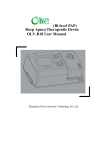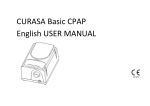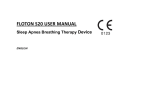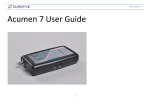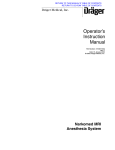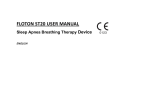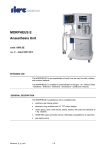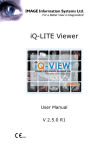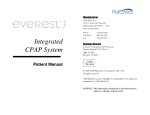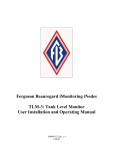Download FLEXO USER MANUAL - Curative Medical
Transcript
Flexo FLEXO USER MANUAL Sleep Apnea Breathing Therapy Device ENGLISH 1 Flexo SYMBOL KEY 3 CAUTIONS AND WARNINGS! 4 LIABILITY 6 INTRODUCTION 6 DESCRIPTION OF THE DEVICE 7 PARAMETERS, KEYS AND DISPLAY 9 OPERATING THE DEVICE 9 MONITOR DISPLAY 10 ALARM 12 DEFAULT 14 FUNCTIONS OF THE DEVICE 14 CLEANING AND MAINTENANCE 15 TROUBLESHOOTING 16 SPECIFICATIONS 18 DISPOSAL 18 QUALITY WARRANTY ERROR! BOOKMARK NOT DEFINED. ELECTRIC MAGNETIC INFORMATION 19 DISCLAIMER OF WARRANTY AND LIMITATION OF FLEXO ERROR! BOOKMARK NOT DEFINED. CONTACT DETAILS 23 2 Flexo SYMBOL KEY Symbol Description Attention! Consult accompanying documents Type B applied part IPX1 Protection against water Class II Double insulated Direct and alternating current supply 3 Flexo CAUTIONS AND WARNINGS! CAUTIONS This device is restricted to sale by or on the order of a physician. Do not use the device before the recommended therapeutic pressure is prescribed by a physician. To prevent water entering the breathing circuit connection on the mask, the device must always be positioned below the head. Do not use the device at room temperatures above 35°C. If the device is used when temperature is above 35°C then the temperature of the airflow may exceed 41°C, which could cause thermal irritation or injury to the patient’s airway. Do not place the device near any items (curtains, bedding, couch) or heating devices (air conditioners, radiators, vents) that may disrupt the airflow around the device. Before carrying or packing the device you must empty the humidifier of water Check the alarm function regularly, and if the device has not been used for a long time please check the power failure alarm before use. If the Power failure alarm does not work contact your dealer. If the clock needs to be reset, keep the Flexo switched on for 12 hours to ensure the clock and alarms are set. The date and time will also need to be reset of the device has not been in use for a long time. If the device has recently been placed in a very hot or very cold environment, wait for 2 hours to allow temperature to normalize before switching the device on. The device can only be operated at temperatures between 5°C and 35°C. WARNINGS! The device cannot be used while mobile. This device is for adult use only and not for use by children or persons with certain disabilities who would require supervision in order to use the device safely. The device cannot be used for life support. Do not use the device in the presence of nitrous oxide or flammable anesthetic mixtures in combination with oxygen or air. 4 Flexo In the event that the device noise level becomes higher than normal, the devices output of air becomes too hot, the device has an abnormal smell or if any part of the device becomes broken, stop using it immediately contact an authorized dealer. The device can only be switched off completely when the power supply is disconnected from the wall socket. Make sure the exhalation opening in the mask or swivel is open so that the exhaled air containing CO 2 can escape. To avoid rebreathing do not wear the mask for more than 3 minutes when the device is not switched on. (Note. At low pressures, the airflow may not be sufficient to remove all exhaled gas (CO2) therefore some rebreathing may occur.) The air inlet of the device should never be covered. To avoid electric shock: o Do not use the device if the device casing or cables are damaged. o Do not use the device if it has been dropped in water. o Keep device away from water. o Before cleaning the device, pull the power plug out of the socket. If the patient experiences mucous membrane dryness in the nose and pharynx, frontal sinus trouble, earache, a running nose or skin sensitivity etc. you should consult your physician immediately. Operation of the device may be adversely affected by: - Electromagnetic fields exceeding the level of 3V/m in the test conditions of EN 60601-1-2 - The operation of high frequency (diathermy) equipment. - Defibrillators, or short wave therapy equipment - Radiation (e.g., X-ray, CT) - Magnetic fields (e.g., MRI). - Do not sterilize the device with high pressured steam 5 Flexo LIABILITY The manufacturer shall not be held liable for any damages in case of: Tampering, modifying, adding expansion features or repair by persons who have not been authorized by the manufacturer. Using accessory or spare parts that are not recommended by us, or not officially registered. Using the device in a way that was not instructed in the manual. INTRODUCTION INTENDED USE Flexo respiratory sleep apnea breathing therapy device is used for treating obstructive sleep apnea or provide non-invasive ventilation in adult patients (>30 kg) for the treatment of respiratory insufficiency ( a condition in which the patient can maintain ventilation without mechanical support for some period of time) or obstructive sleep apnea. It provides a stable continupus positive airway pressure. The therapeutic pressure is prescribed by a physician according to patients's condition. It provides a stable continuous bi-level positive airway pressure. CONTRAINDICATIONS The use of positive airway pressure may be contraindicated if the patient suffers from the following pre existing conditions: Pneumothorax Pneumomediastinum (Air in mediastinum) Cerebrospinal fluid leakage Pneumocephalus Extremely low blood pressure or shock Confusion or coma resulting in the patient not been able to co-operate with or accept the mask Excessive secretions in the airway as well as not coughing effectively and weak voluntary breathing. 6 Flexo DESCRIPTION OF THE DEVICE FRONT BACK Attention! The data transmission interface is only used during production or service when transmitting data to RS232 or the USB of a PC. Equipment connected to the analog or digital interfaces must comply with the respective IEC standards (e.g. IEC 950 for data processing equipment and IEC 60601-1 for medical equipment). All configurations shall comply with the current version of the standard for SYSTEMS IEC 601-1-1. If you are in doubt consult the technical service department or your local representative. RS232 and the USB port are only for technical use. 7 Flexo FLEXO, ACCESSORIES AND PARTS 1 Flexo 1 Power cord Filter 1 Hose with and pressure tube CONNECTING THE SYSTEM Check whether the device is damaged and if any accessories or parts are missing. Put the device on a stable and even surface. Make sure the air inlet in the back of the device is not blocked. Connect the power supply cord to the device. Connect the two ends of the hose to the device’s air outlet and mask separately. Connect the pressure tube to the pressure gauge in the device. Connect to the power supply. 8 Flexo PARAMETERS, OPERATION AND DISPLAY PARAMETERS Function Introduction Range/Measurement IPAP Inspiratory Positive Air Pressure EPAP CPAP VT BPM MV IT Leak I-SLOP I-SENS E-SENS MODE IE% Expiratory Positive Air Pressure Continuous Positive Air Pressure Tidal Volume Breaths per minute Minute Ventilation Inspiration Time Leakage Volume per minute Speed of rising pressure Sensitivity of inspiration triggering Sensitivity of expiration triggering Operation mode The percentage of inspiration time in a respiration cycle, applicable with T or ST mode Ramp Time Low minute ventilation alarm Low tidal volume alarm Power Failure Alarm 4 to 30cmH2O with ST30 [0.5 cmH2O per step 4 to 20cmH2O [0.5 cmH2O per step] 4 to 20cmH2O [0.5 cmH2O per step] RAMP LowMV LowVT Power Alarm HiPRES APNEA High pressure alarm Apnea alarm 4 to 60, 1bpm per step Litres 10~80% (1 % per change) 1 to 6, 1 per step 1 to 6, 1 per step 1 to 6, 1 per step APCV, S, T, ST, CPAP 10% to 80% - 1% per step 0 to 60min, 1min per step 1 to 10 L/m, 1 L/m per step (ON/OFF) 50 to 500 ml, 50 ml per step (ON/OFF) ON/OFF ON/OFF 10s to 40S, 5S per step (ON/OFF) OPERATING THE DEVICE BASICS 1. 2. 3. 4. 5. Plug the device into a power source. Turn the device onto standby using the switch at the back of the device. The Power light on the device will display green when the Flexo is on. When the device is on standby the monitor display is visible. Adjust the settings of the device according to the patient’s requirements using the blue dial. 9 Flexo MAIN In the bottom right corner of the monitor display, you can enter the main menu, which gives you three options. Monitor Alarm Default MONITOR DISPLAY The monitor display allows you to set the treatment options for the patients and to monitor the parameters as shown in the table below: VT MV RR IT LK MINIT Tidal Minute Respiratory Inspiratory Leak Minimum Volume Volume Rate Time inspiratory time TVV Target Tidal Volume MODE To set the treatment option the mode needs to be set, followed by the specific settings for that mode. SPONTANEOUS MODE: S MODE MODE:S IPAP 10.0 EPAP 4.0 ISLP 3 ISNS 3 ESNS 3 The inspiration and expiration phase is dependent on patient's spontaneous breathing. During the inspiration phase the device delivers at the preset IPAP pressure and during expiration phase the device delivers at the preset EPAP pressure. 10 Flexo TIMED MODE: T MODE IPAP 10.0 The inspiration and expiration phase is dependent on the settings of the device. The patients breathing will be controlled by the BPM (Breaths per minute) and IE% (percentage of inspiration time over a respiration cycle) set EPAP 4.0 The pressure will be switched automatically at a rate determined by BPM and IE%. BPM 15 I/T% 36 ISLP 3 MODE:T CPAP MODE MODE:CPAP CPAP 10.0 RAMP 0 min In CPAP mode the device will output the set pressure constantly. ST MODE / SPONTANEOUS-TIMED MODE MODE:ST IPAP 10.0 EPAP 4.0 BPM 15 I/T% 36 ISLP 3 ISNS 3 ESNS 3 ST mode includes 2 patterns, when the patient is able to breathe spontaneously, the device works as S mode; however, when the patient is unable to breathe spontaneously or the patient’s breath slows to a rate less than the preset backup rate (BPM), the device will switch to T mode. 11 Flexo PRESSURE CONTROL MODE: APCV (ASSISTED PRESSURE CONTROL VENTILATION) MODE:APCV IPAP 10.0 EPAP 4.0 BPM 15 I/T% 36 ISLP 3 ISNS 3 ESNS 3 APCV mode is similar to the ST mode, except that all breaths in a controlled cycle. The APCV mode is a pressure-limited, device-or-patient triggered, time-cycled mode. Therefore, the inspiratory pressure may be triggered by the patient or by the therapy device, but IPAP will be pressurelimited with a set cycle time determined by the inspiratory time control (IE %) ALARM To set an alarm use the blue dial to select which alarm is used and then turn ON or OFF ALARM SET HIGH IP ON/OFF APNEA 10 LOW VT 100 ON/OFF LOW MV 4 ON/OFF HIGH LEAK 50 ON/OFF LOW LEAK 10 ON/OFF YES ON/OFF NO 12 Flexo APENA ALARM (APENA) The apnea alarm detects pauses in spontaneous breathing. The alarm is activated when the time between spontaneous breaths exceeds the Apnea alarm setting. The alarm setting range is from 5s to 60S, 5S per step. The alarm is terminated when two consecutive spontaneous breaths occur within the apnea alarm time setting or by pressing the Alarm key. LOW TIDAL VOLUME ALARM (LOWVT) The low tidal volume alarm is activated when the calculated tidal volume ≤ the alarm setting. The alarm setting range is from 50 to 500 ml, 50 ml per step. The alarm is terminated when the calculated tidal volume > the alarm setting or press the Alarm key. LOW MINUTE VENTILATION ALARM (LOWMV) The low minute ventilation alarm detects when a user is not receiving the specified volume of air per minute. The alarm is activated when the calculated minute ventilation ≤ the alarm setting. The alarm setting range is from 1 to 10 L/m, 1 L/m per step. The alarm is terminated when the calculated minute ventilation > the alarm setting or by pressing the Alarm key. HIGH PRESSURE ALARM (HIPRES) The high-pressure alarm limits the high pressure to the patient by activated the alarm when the pressure is at too greater level. The alarm is detected when the IPAP ≥ 30 cmH2O. The alarm is terminated when the IPAP < 30 cmH 2O. HIGH LEAKAGE Alarm for High Leakage LOW LEAKAGE Alarm for Low leakage 13 Flexo CHECKING THE POWER FAILURE ALARM Switch the device on and keep running for at least 10 seconds. If the power cord is unplugged or the power is switched off at the socket the alarm should sound. Check whether the alarm lasts long enough (around 30sec). When the device is switched on the alarm should stop automatically. Please check the alarm at least once a month. DEFAULT You can return the Flexo to the default setting through the Main menu. Use the blue dial to select YES or NO. DEFAULT SET YES NO FUNCTIONS OF THE DEVICE INSPIRATORY TIME PERCENTAGE SETTING Inspiratory time percentage of the total respiratory cycle as inspiratory ratio. When the Flexo is in T, ST or APCV mode the inspiratory ratio can be set. The range can be set between between 10 to 80%, adjusted in intervals of 1%. RESPIRATORY RATE (BPM) When treatment for work in T, ST or APCV mode, the frequency can be set. Frequency setting range of 5 to 40 times / minute, adjusting interval 1bpm RAMP When this function is selected the device will start delivering the minimum air pressure first before increasing the pressure steadily to the set pressure within the set time. This function is to allow the patient to fall asleep more comfortably. This soft start function is particularly helpful for patients who are not accustomed to continuous positive airway pressure therapy. The pressure delay time range is between 0 - 60 minutes with pressure steps every minute. 14 Flexo AUTOMATIC MODE In the CPAP mode, if "Automatic" (ON) mode is selected then when the mask is breathed into the Flexo will automatically begin to provide therapy. When you remove the mask within 15 seconds, the Flexo will automatically shut down. In this mode, if the breathing tube or breathing mask are disconnected the Flexo will automatically shut down. CLEANING AND MAINTENANCE CLEANING THE FLEXO WARNING! To avoid electrical shock unplug the Flexo power cord before cleaning the device WARNING! Do not immerse the device in liquid or allow any liquid to enter the enclosure, inlet filter, or any other openings 1. To clean the exterior of the device use a dampened cloth and a mild detergent. Allow the device to dry completely before plugging in the power cord. 2. The mask and tubing should be cleaned daily. For details on cleaning your mask and accessories refer to the cleaning instructions packaged with the accessories. CHANGING FILTER The fine filter is in the filter cassette at the back of the device. Take it out and change it with a new one every week. Never use the device without a filter. Dirty inlet filters may cause high operating temperatures that may affect device performance. Regularly examine the inlet filters for cleanliness. If there is a lot of dust or smoke in the environment change the filter more frequently. Ensure that you buy your filters from a vendor endorsed by the manufacturer. WARNING! Ensure the filter is dry. A damp or wet filter may damage the device. WARNING! Ensure the device is powered off before changing the filter. 15 Flexo TROUBLESHOOTING Different problems that may be encountered, their causes and solutions are detailed below. If your dealer cannot resolve the problems, please consult your physician or contact our service center. Problem Cause Low output pressure Air leak is detected by the device. Discomfort due to high pressure. When pressure is over 13cmH2O(~1.3kPa), some patients will feel discomfort. However, this pressure may be needed for effective therapy. Symptoms of sleep apnea syndrome appears again. (like day time sleepiness) When your weight is increased, your nose is blocked or you drink etc, you need higher pressures. Consult your physician. Dirty filter Air inlet blocked The device is too close to wall, curtains or other objects, which hinders air circulation Defective device Water in the pressure tube Change filter Check air inlet Take away the device to keep it over 20cm from wall, curtains or other objects Contact our service center Dry the pressure tube thoroughly Air is too warm No air flow 16 Solution Dry thoroughly or clean the pressure tube. Check all connections to reduce leakage. Re-seat mask and adjust headgear to reduce leakage around mask. You may take up to 4 weeks to be accustomed to higher pressures. When using the device, breathe through nose with mouth closed and keep calm. If you continue to experience discomfort consult your physician. Flexo Problem Low air flow Motor always operates at maximum speed When turned on, the device doesn’t work Motor works normally but the output pressure is lower than the set pressure Only low output pressure Too noisy Date and time invalid Cause Ramp function is active Air inlet blocked The pressure tube is not connected or it is blocked Leakage in the device The device is in automatic operation (AUTO ON) Power is not plugged in No electric supply Fuse is blown (Note: before checking, unplug power cable) Patient hose or pressure tube is not correctly connected with the device Air leakage through mask or patient tube Dirty filter or air outlet blocked Therapeutic pressure readjusted Soft start function active Patient hose is not connected or connected incorrectly Leakage through mask or patient hose Not air tight between humidifier and device The device not used for long time (at least three months) Solution Decrease soft start time Check air inlet Check the pressure tube Contact our service center Set the device to manual operation (AUTO OFF) Check whether power cable is connected with the device Check main electricity supply, Change fuse Contact our service center Check whether connection is correct and firm Contact our service center Change filter, check air outlet Consult your physician If necessary, cancel soft start function or set soft start function time again Check connection Check patient hose Check humidifier and device Put the device on stand-by mode for 12 hours. SERVICE Service of the Flexo should only be performed by persons authorized by the company. To increase the device’s life, the user must read the Flexo’s safety instructions and cleaning instructions. 17 Flexo SPECIFICATIONS Flexo Pressure range Pressure variance Ramp time Noise: (10 cm H2O/~1.0kPa) Dimensions Weight Water temperature AC power DC power Protection again electric shock Degree of protection against electric shock Degree of protection against harmful ingress of water Electromagnetic Compatibility ST30 - 4cm H2O (~0.4kPa) -30 cm H2O (~2.0kPa) ±0.4 cm H2O (~0.04kPa) 0-60min. adjustable 1min./step <50dB (A) 300mm(L)×200mm(H)×170mm(W) 2.75Kg 44°C Maximum AC Input 100-240V 2-1A 50-60Hz DC Input 12-24V 5.5-2.5A Class II Type B Applied Part Ordinary Equipment, IPX1 Flexo device meets the requirements of EN 60601-1-2. Operation Temperature Relative humidity Atmosphere pressure +5°C ~ +35°C 10%%~ 93%(non-condensing) 700hPa ~ 1060hPa Transport or storage Temperature Relative humidity Atmosphere pressure -20°C ~ +55°C 10% ~ 93%(non-condensing) 500hPa ~ 1060hPa DISPOSAL This device, its accessories and its packaging have to be disposed correctly at the end of the usage. Please follow Local Laws or Regulations for disposal. 18 Flexo ELECTRIC MAGNETIC INFORMATION GUIDANCE AND MANUFACTURERS DECLARATION OF ELECTROMAGNETIC IMMUNITY FOR EQUIPMENT AND SYSTEMS THAT ARE NOT LIFE SUPPORTING Attention! Please use Flexo Sleep apnea breathing therapy device according to electric magnetic information in list. The Flexo is intended for use in the electromagnetic environment specified below. The user of the Flexo should ensure that it is used in such an environment. Emission test RF emissions CISPR 11 RF emission CISPR 11 Harmonic emissions IEC 61000-3-2 Voltage fluctuations/ flicker emissions IEC 61000-3-3 Compliance Group 1 Class B Class A Electromagnetic environment – guidance The Flexo uses RF energy only for its internal function. Therefore, its RF emissions are very low and are not likely to cause any interference in nearby electronic equipment. The Flexo is suitable for use in all establishments, including domestic establishments and those directly connected to the public low-voltage power supply network that supplies buildings used for domestic purposes. Complies 19 Flexo Immunity test IEC 60601 test level Compliance level 6 KV contact 4 kV air Electromagnetic environment – guidance Electrostatic discharge (ESD) IEC 61000-4-2 Electrical fast transient/burst IEC 61000-4-4 Surge IEC 61000-4-5 6 kV contact 4 kV air 8 kV air 2 kV for power supply lines 2kV for power supply lines Mains power quality should be that of a typical commercial or hospital environment. 1 kV differential mode 1 kV differential mode Mains power quality should be that of a typical commercial or hospital environment. Voltage dips, short interruptions and voltage variations on power supply input lines IEC 61000-4-11 <5% UT (>95% dip in UT) for 0.5 cycle <5% UT (>95% dip in UT) for 0.5 cycle 40% UT (60% dip in UT) for 5 cycles 40% UT (60% dip in UT) for 5 cycles Mains power quality should be that of a typical commercial or hospital environment. If the user of the Flexo requires continued operation during power mains interruptions, it is recommended that the Flexo be powered from an uninterruptible power supply or a battery. 70% UT (30% dip in UT) for 25 cycles 70% UT (30% dip in UT) for 25 cycles <5% UT (>95% dip in UT) for 5 sec 3 A/m <5% UT (>95% dip in UT) for 5 sec 3 A/m Floors should be wood, concrete or ceramic tile. If floor are covered with synthetic material, the relative humidity should be at least 30%. Power Power frequency magnetic fields should be at normal levels typical of frequency a location in a commercial or hospital environment. (50/60Hz) Magnetic field IEC-61000-4-8 NOTE: UT is the A/C mains voltage prior to application of the test level. 20 Flexo Immunity test IEC 60601 test level Compliance level Electromagnetic environment – guidance Portable and mobile RF communications equipment including cables should not be used close to any part of the Flexo other than the recommended separation distance calculated from the equation applicable to the frequency of the transmitter. Recommended separation distance Conducted RF IEC 610004-6 Radiated RF IEC 610004-3 3 Vrms 150 kHz to 80 MHz 3 V/m 80 MHz to 2.5 GHz 3 Vrms 3 V/m 3.5 d P V1 3.5 d P E1 80 MHz to 800 MHz 7 d P E1 800 MHz to 2.5 GHz Where P is the maximum output power rating of the transmitter in watts (W) according to the transmitter manufacturer and d is the recommended separation distance in metres (m). Field strengths from fixed RF transmitters, as determined by an electromagnetic site survey,a should be less than the compliance level in each frequency range.b Interference may occur in the vicinity of equipment marked with the following symbol: NOTE 1: At 80 MHz and 800 MHz, the higher frequency range applies. NOTE 2: These guidelines may not apply in all situations. Electromagnetic propagation is affected by absorption and reflection from structures, objects and people. Field strengths from fixed transmitters, such as base stations for radio (cellular/cordless) telephones and land mobile radios, amateur radio, AM and FM radio broadcast and TV broadcast cannot be predicted theoretically with accuracy. To assess the electromagnetic environment due to fixed RF transmitters, an electromagnetic site survey should be considered. If the measured field strength in the location where the Flexo is used exceeds the applicable RF compliance level above, the Flexo should be observed to verify normal operation. If abnormal performance is observed additional measures may be necessary, such as, readjusting or relocating the Flexo. b Over the frequency range 150 kHz to 80 MHz, field strengths should be less than 3 V/m. 21 Flexo RECOMMENDED SEPARATION DISTANCES BETWEEN PORTABLE AND MOBILE RF COMMUNICATIONS EQUIPMENT AND THE FLEXO The Flexo is intended for use in an electromagnetic environment in which radiated RF disturbances are controlled. The customer or the user of the Flexo can help prevent electromagnetic interference by maintaining a minimum distance between portable and mobile RF communications equipment (transmitters) and the Flexo as recommended below, according to the maximum output power of the communications equipment Separation distance according to the frequency of transmitter Rated maximum output power of transmitter (m) (W) 150 kHz to 80 MHz 80 MHz to 800 MHz 800 MHz to 2.5 GHz 3.5 d P V1 3.5 d P E1 7 d P E1 0.01 0.12 0.12 0.23 0.1 0.39 0.37 0.74 1 1.17 1.17 2.33 10 3.69 3.69 7.38 100 11.67 11.67 23.33 For transmitters rated at a maximum output power not listed above, the recommended separation distance d in metres (m) can be estimated using the equation applicable to the frequency of the transmitter, where P is the maximum output power rating of the transmitter in watts (W) according to the transmitter manufacturer. NOTE 1: At 80 MHz and 800 MHz, the separation distance for the higher frequency range applies. NOTE 2: These guidelines may not apply in all situations. Electromagnetic propagation is affected by absorption and reflection from structures, objects and people. 22 Flexo CONTACT DETAILS Curative medical devices gmbh Manufacturer address: Blasewitzer Str. 41, 01307 Dresden, Germany Tel: +49-351-4504500 Fax: +49-351-4504511 [email protected] 23























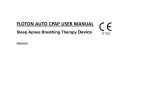
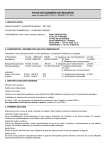
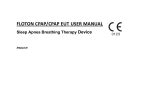
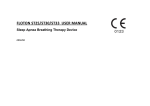
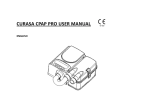
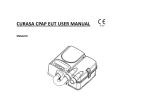
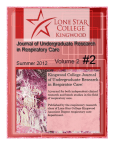
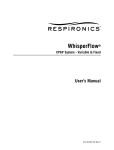
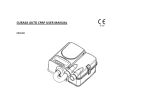
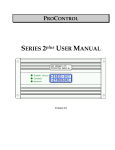
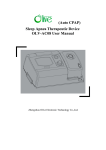
![reply_card [Converted] - TheMysticHelming.mono.net](http://vs1.manualzilla.com/store/data/005649301_1-3a046a309a634867449ff92cdd957a65-150x150.png)
